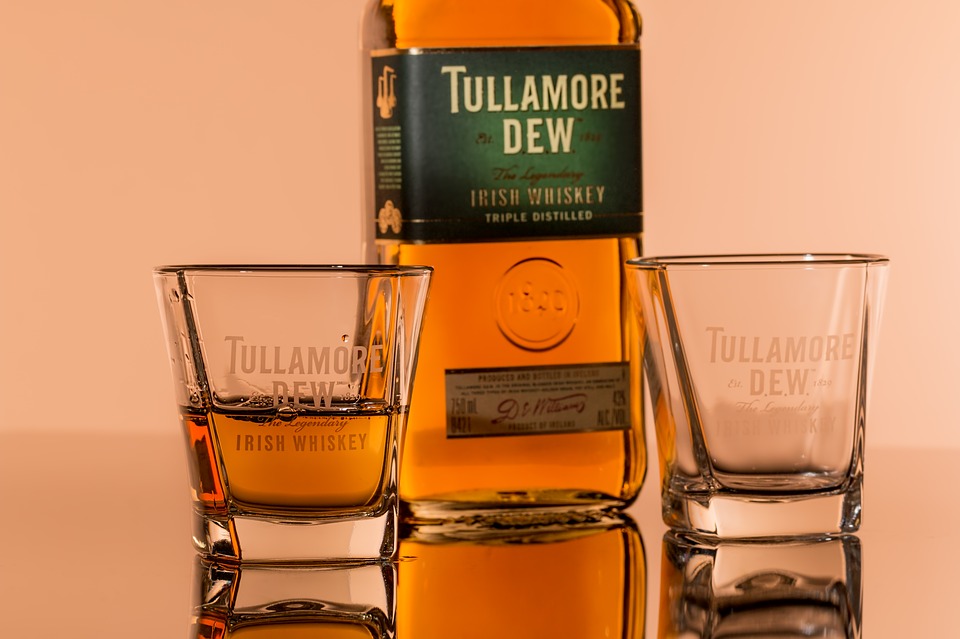While green beer, corned beef and cabbage, and bagpipes may take center stage during your St. Patrick’s Day festivities, no celebration of Irish heritage is complete without Irish whiskey. And there’s a reason for that. Because of its smoothness, rich flavor profiles, and overall drinkability, Irish whiskey has become one of the top spirits to enjoy year round.
What sets Irish whiskey apart from other whiskeys, and how did this popular spirit almost cease to exist? Let’s take a closer look in our Ultimate Guide to Irish Whiskey.
What is Irish Whiskey?
This one is obvious, but to qualify as Irish whiskey, it must first be born in Ireland. But that’s not all it takes. Much like Scotch or Bourbon, Irish whiskey must follow certain rules to be classified as such. Irish whiskey can be distilled to no higher than 94.8% ABV, and it must be wood-aged for at least three years in Ireland.
Unlike Scotch, Irish whiskeys are allowed to use enzymes with starches prior to the fermentation process. Irish whiskey used to be exclusively pot-distilled, but today is either pot-distilled, column distilled, or both.
The History of Irish Whiskey
The word whiskey comes from the Gaelic uisce beatha, which means water of life. Like so many other foods and beverages, the origin of Irish whiskey is unclear, but the spirit can be traced back as far as 1000 A.D. It is believed that Irish monks brought the idea of distilling to Ireland, which sparked the birth of Irish whiskey. At the start of the 20th century, Irish whiskey was incredibly popular abroad, especially in Great Britain and the United States.
Irish whiskey’s prominence would fall starting in 1919, with Ireland declaring independence from Britain, which in turn led to a trade war in which Irish exports were cut off, hampering the whiskey industry. The United States dealt Irish whiskey another blow when it instituted Prohibition, banning alcoholic beverages until 1933.
The world saw a resurgence in Irish whiskey beginning in the late 20th century, with distilleries in Ireland growing from just four in operation to nearly 20 today. Since 1990, Irish whiskey has been the fastest growing spirit in the world.
Types of Irish Whiskey
There are several types of Irish whiskey, which are distinguished by both the type of grain used as well as the distillation process.
Blended Whiskey
The most common type of Irish whiskey, blended whiskey combines grain whiskey with single malt or single pot still whiskeys.
Single Malt Irish Whiskey
Similar to Scotch, single malt Irish whiskey is made in a pot still using malted barley from a single distillery. This type of whiskey can be double or triple distilled.
Single Pot Still Whiskey
Single pot still whiskey is distilled in a pot still within a single distillery, but unlike single malt whiskey, this style uses a mixture of malted and unmalted grain. Until the development of blended whiskey, this was the most popular style in the 1900s.
Grain Whiskey
Grain whiskey is distilled in a continuous column still, or a Coffey still, instead of a pot still. Most grain whiskeys are not bottled on their own, but instead used in blended whiskey. Grain whiskey is both lighter and less flavorful, which pairs well with pot still whiskeys.
No matter the style or the holiday, Irish whiskey’s popularity is booming, and the spirit remains a key addition to any bar.
Another key addition to any bar? Bar equipment designed with the bartender in mind. Watch and hear why the Tobin Ellis Signature Cocktail Station can help bartenders serve the most popular spirits more efficiently than ever in this short video.








